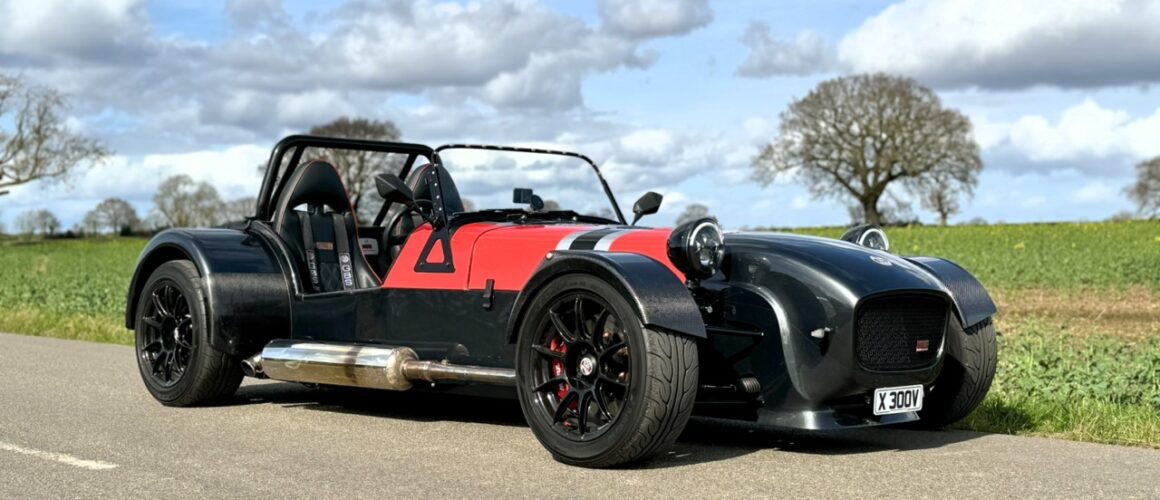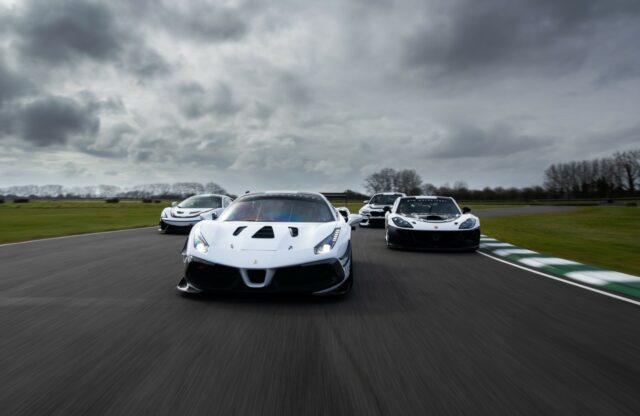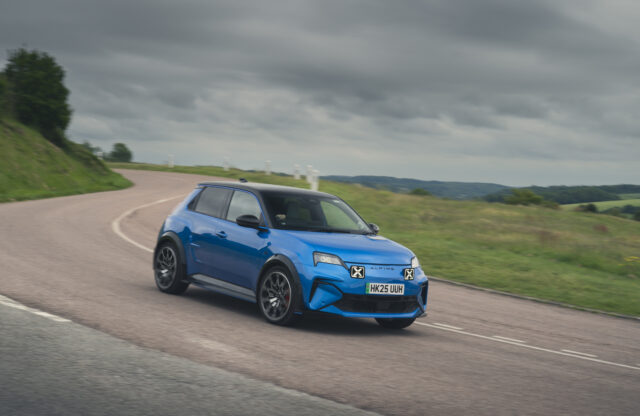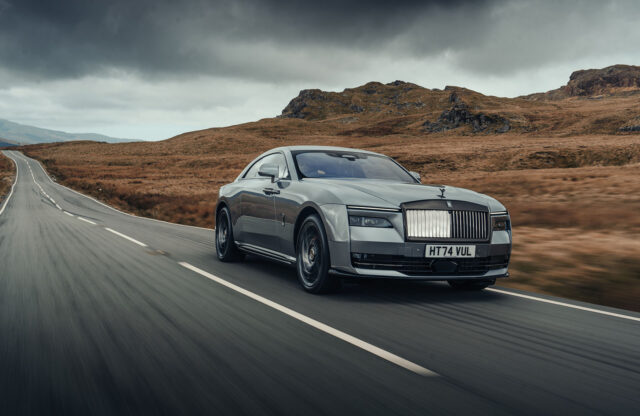In 2035, the digital age looks as though it will finally extinguish internal combustion thanks to the EU and UK’s planned bans on new purely piston-powered cars. And, for everyday econoboxes designed to transport people from point A to point B, the impending petrol prohibition causes no great loss. After all, it is in exactly these mundane scenarios that the serene, effortless progress afforded by the electric motor comes into its own. But what about those of us whose enjoyment comes from the act of rowing through gears to the sound of exploding hydrocarbons?
Luckily for us, the EU and UK have allowed exemptions for small firms building fewer than 1000 cars a year, which means that while large OEMs will be forced to go electric, boutique manufacturers will effectively become petrol-serving speakeasies when 2035 arrives.
In this brave new world, the Caterham Seven and its offshoots will soldier on to uphold the virtues of lightness and simplicity that underline old-school driving thrills. Ironically, it seems the legislated lurch towards electrification is what was needed to bring piston-powered sports cars back to the sheer purity for which so many enthusiasts have been yearning for so long.

You can feel the wind ripping past your face and hear the unadulterated bark of the side-exit exhaust
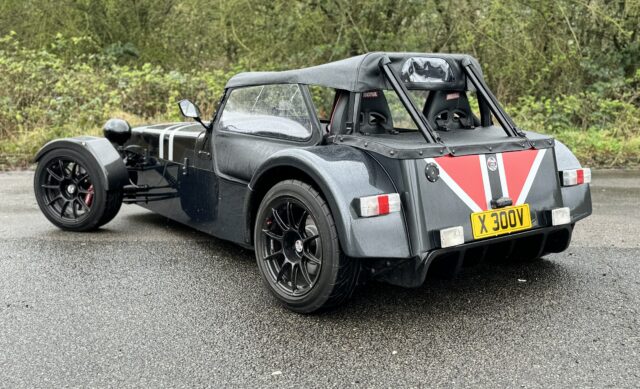
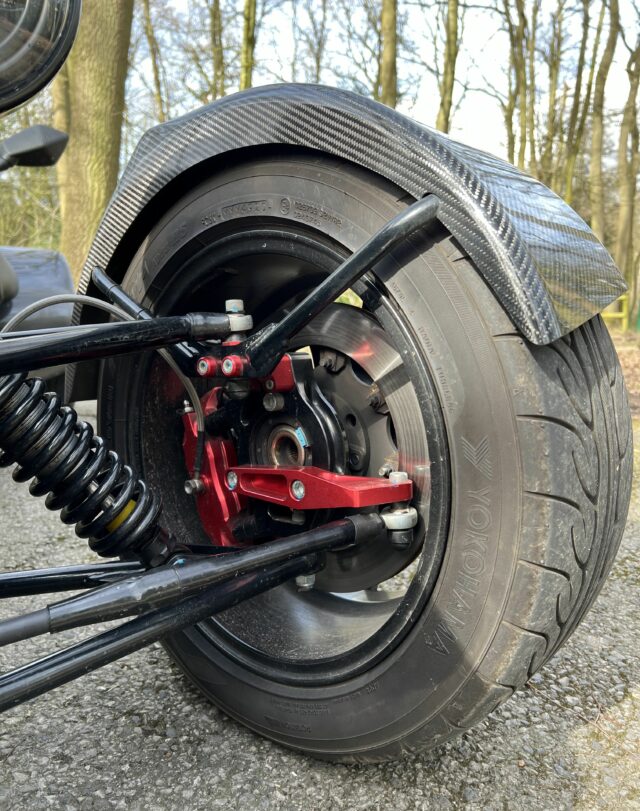
Which begs the question: What exactly does the future look like? Well, to find out, Magneto headed to Great British Sportscars in rural Nottinghamshire to find out. GBS has been building Caterham-esque machines since 2007, and its latest offering, the Zero, provides a fascinating insight into the shape of things to come.
To the untrained eye, the Zero looks indistinguishable from the car on which it was inspired. It has the same brick-like bodywork, the same bug-eyed headlights and the same wanton disregard for luxuries beyond a windscreen and a heater. Beneath the Motul-liveried demonstrator’s admittedly familiar bodywork, however, are a host of key differences.
Although you might not notice unless they were side by side, the GBS Zero is 250mm longer and 145mm wider than a typical Seven. I’m around 6ft tall, and on test I have more than enough space to get comfortable once strapped into the Zero’s cockpit with a three-point harness. The other benefit of the slightly larger chassis is the fact that it has allowed GBS to mount the engine – in this case, a 2.5-litre Ford Duratec – behind the front axle, providing a near-perfect 50:50 weight distribution.

Those familiar body panels are also bonded to the spaceframe latticework beneath, effectively creating a monocoque that improves both torsional rigidity and safety. Complementing the chassis is a double-wishbone suspension set-up with adjustable dampers at each corner, a limited-slip differential, disc brakes and sticky Yokohama Advan AD08 rubber. Aside from that, the only thing keeping the 600kg car in check is the deftness of your right foot. And, with that rather sobering thought in mind, it’s time to twist the key, jab the starter button and hear the 240bhp four-cylinder engine erupt into life.
Nottinghamshire’s provincial B-roads provide a stern test for any performance car. As is typical of the UK, they’re littered with a vindictive medley of crests, potholes, cracks and compressions that can confound even the most well sorted suspension system. If I’m being honest, I had been expecting a thimble of a car with the same power-to-weight figure as a McLaren 720S (500bhp per tonne) going through the rear wheels to be on the malevolent side. To make matters worse, the verges are saturated with water, and tree canopies conceal slippery patches of Tarmac primed to slide the sports car into the scenery.
Luckily, the Zero prohibits you from indulging in such paranoia as soon as you set off. All the controls, whether it’s the steering, the brake and clutch pedals, or the gearbox, feel unashamedly unassisted and analogue compared with those of a contemporary car. Settle in, though, and the novelty of all the effort and engagement required is the perfect palate cleanser for the homogeneity of electric power-steering and over-servoed brakes.

Once the engine is up to temperature, a long, straight stretch of B-road is an irresistible invitation to properly open the taps. You’re met with visceral, motorcycle-like acceleration as the Duratec roars all the way to its red line. Another motorcycle parallel lies in the fact the sense of speed and danger are so much higher when you can feel the wind ripping past your face and hear the unadulterated bark of the side-exit exhaust and independent throttle bodies as the needle climbs.
As with a race car, the unservoed brake pedal provides plenty of feel but requires a prodigious shove to bleed off the speed. The benefit of this extra effort is pedal feel that you just won’t find in a mainstream performance car, which allows you to accurately sense when the front wheels are on the precipice of a tyre-shredding lock-up.
Bleed off the brake, slowly squeeze the throttle through a flowing bend, and the steering provides detailed feedback of the road surface beneath you, perfectly translating the grip levels of all four wheels through the palms of your hands. Admittedly, the lack of power steering requires more arm power at low speed, and the turning circle isn’t brilliant, but on the right road at the right time, it couldn’t be more inconsequential.

The suspension is surprisingly pliant on roads such as this – undoubtedly helped by its lengthened double-wishbone arms and adjustable dampers. Happily, it generates little of the bounciness you might expect, and instead allows the car to largely glide over road imperfections with little drama.
That’s not to say, however, that this is a particularly easy car to drive. Pushing it hard on the public road is certainly ill advised. You must have your wits about you. Take liberties with the road surface, your entry speed or your throttle application in particular, and there’s no electronic safety net to avert disaster – this is a driver’s car in the truest sense.
In other words, the GBS Zero succeeds in doing exactly what it was designed for: delivering the sports car sensation undiluted and uncorrupted by excess weight and needless complication. While it’s a shame that we will never see such cars from big OEMs again, it’s fortunate that they will always be built by passion-led petrolheads such as GBS.
For more on Great British Sports Cars, click here.

